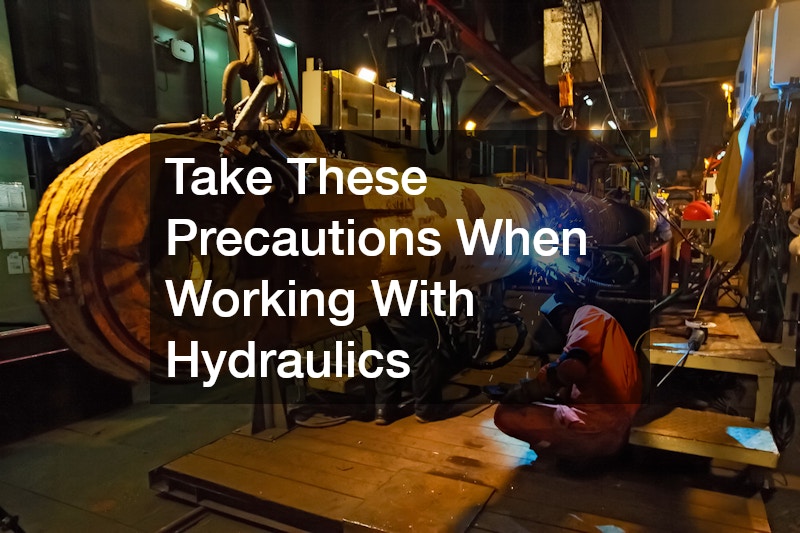Hydraulics are an integral part of many industrial and manufacturing processes. They use fluid under pressure to create mechanical movement, making them highly efficient for lifting, pushing and pulling tasks.
Various machinery, from construction equipment to manufacturing lines, utilise hydraulic systems to enhance productivity and efficiency.
Due to their power and complexity, working with hydraulics requires a solid understanding of their operation. Whether you are a technician or an operator, recognising how fluid dynamics contribute to their function is crucial for troubleshooting and maintenance. This knowledge facilitates safer operations and minimises the risk of equipment failure.
The applications of hydraulics extend beyond industries, influencing everyday products and systems. Elevator systems, for example, rely on hydraulics for smooth and consistent performance. By examining everyday interactions with hydraulics, individuals can appreciate the role they play in modern conveniences and infrastructure.
Safety Measures When Working with Hydraulic Systems
Safety is paramount when dealing with hydraulic systems, given the high pressures that the fluids are subjected to. Proper training is essential, ensuring that individuals are aware of the potential hazards and are skilled in handling the equipment safely. This training should encompass both theoretical and practical aspects, providing a comprehensive understanding of safe operating procedures.
Personal protective equipment (PPE) is another critical component of hydraulic safety. Gloves, goggles and protective clothing are essential to shield against leaks or spills, which can occur unexpectedly. Ensuring that this equipment is readily available and in good condition is as vital as following the correct procedures during hydraulic operations.
Regular equipment inspections and maintenance form the backbone of ensuring safety when working with hydraulics. By conducting routine checks, potential issues can be identified and rectified before they become hazardous. Such proactive measures increase the longevity of hydraulic systems and significantly reduce the likelihood of accidents.
Preventing Hydraulic Leaks
Hydraulic leaks are a common issue that can pose significant risks if not addressed promptly. These leaks not only reduce the efficiency of the system but can also be hazardous to both the machinery and the operators. It is vital to regularly inspect seals, hoses and fittings for signs of wear and replace them as necessary.
Proper installation and calibration of components can mitigate the risks of leaks. Ensuring that fittings are secure and that hoses are correctly positioned alleviates unnecessary stress that could lead to failures. Expertise in initial setup and continued adjustments plays a critical role in maintaining system integrity.
Environmental considerations are also pivotal when addressing hydraulic leaks. Spilled fluids can harm ecosystems and lead to costly cleanup operations. Employing sustainable practices and ensuring containment measures are in place can help reduce the environmental impact of hydraulic systems.
Conducting Routine Inspections and Maintenance
Regular inspections are essential to maintaining hydraulic systems and ensuring their safe operation. These inspections should be systematic, covering all components from pumps to filters. Detailed logging of inspections can help track wear patterns and improve maintenance scheduling, aiding in preventing unforeseen breakdowns.
Maintenance should not only be reactive but also preventative. Scheduled maintenance reduces the likelihood of system failure and prolongs the life of hydraulic machinery. By implementing a preventative maintenance programme, businesses can potentially save on repair costs and improve overall operational efficiency.
Using quality parts and fluids during maintenance is critical to the system’s longevity and performance. High-quality components are less likely to fail under pressure and suitable fluids ensure optimal functionality. Investing in premium parts pays off in terms of reliability and efficiency, safeguarding both the machinery and the workforce.
Staying Informed and Updated
The field of hydraulics is continually evolving, with new technologies and protocols being developed. Staying informed about these innovations ensures that you are implementing the most effective and safest methods. Engaging in continuous education and training is crucial for professionals working with hydraulic systems.
Industry standards and regulations frequently adapt to incorporate the latest safety measures and technologies. Keeping abreast of these changes ensures compliance and promotes a safer working environment. Regularly attending workshops and seminars can provide valuable insights into the latest developments in hydraulic technology.
Networking with other professionals in the field can also be beneficial. Sharing insights and experiences can lead to better problem-solving techniques and innovation in safety practices. Building professional relationships within the industry not only enhances knowledge but can also lead to collaborative efforts in advancing hydraulic safety and efficiency.
.



